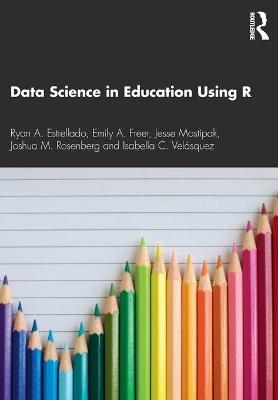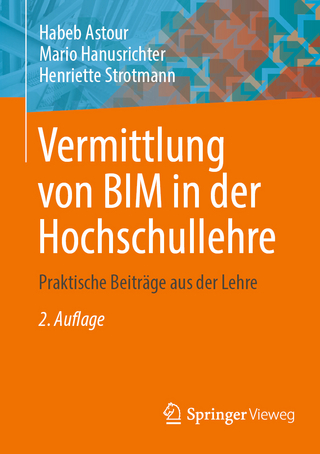
Data Science in Education Using R
Routledge (Verlag)
978-0-367-42225-7 (ISBN)
Data Science in Education Using R is the go-to reference for learning data science in the education field. The book answers questions like: What does a data scientist in education do? How do I get started learning R, the popular open-source statistical programming language? And what does a data analysis project in education look like?
If you’re just getting started with R in an education job, this is the book you’ll want with you. This book gets you started with R by teaching the building blocks of programming that you’ll use many times in your career. The book takes a "learn by doing" approach and offers eight analysis walkthroughs that show you a data analysis from start to finish, complete with code for you to practice with. The book finishes with how to get involved in the data science community and how to integrate data science in your education job.
This book will be an essential resource for education professionals and researchers looking to increase their data analysis skills as part of their professional and academic development.
Ryan A. Estrellado has served public schools for over seventeen years as a school psychologist and administrator. Ryan writes about working with data, education and other projects at https://ryanestrellado.com. Emily A. Freer is the Director of Educational Development and Assessment at the Marquette University School of Dentistry. Learn more about Emily at https://emilyfreer.com. Jesse Mostipak is the Community Advocate for Kaggle, and has worked both as a high school science teacher and lead data scientist within education non-profits. To follow Jesse’s learning adventures in Python and deep learning, head over to https://jessemaegan.com. Joshua M. Rosenberg is an Assistant Professor of STEM Education at the University of Tennessee, Knoxville. Follow Josh’s work at http://joshuamrosenberg.com. Isabella C. Velásquez is a data analyst committed to nonprofit work with the goal of reducing racial and socioeconomic inequities. To follow Isabella’s personal projects, join her at https://ivelasq.rbind.io.
1. Introduction: Data Science in Education - You’re Invited to the Party! 2. How to Use this Book 3. What Does Data Science in Education Look Like? 4. Special Considerations 5. Getting Started with R and RStudio 6. Foundational Skills 7. Walkthrough 1: The Education Data Science Pipeline with Online Science Class Data 8. Walkthrough 2: Approaching Gradebook Data from a Data Science Perspective 9. Walkthrough 3: Using School-Level Aggregate Data to Illuminate Educational Inequities 10. Walkthrough 4: Longitudinal Analysis with Federal Students with Disabilities Data 11. Walkthrough 5: Text Analysis with Social Media Data 12. Walkthrough 6: Exploring Relationships Using Social Network Analysis with Social Media Data 13. Walkthrough 7: The Role (and Usefulness) of Multilevel Models 14. Walkthrough 8: Predicting Students’ Final Grades Using Machine Learning Methods with Online Course Data 15. Introducing Data Science Tools to Your Education Job 16. Teaching Data Science 17. Learning More 18. Additional Resources 19. Conclusion: Where to Next?
| Erscheinungsdatum | 28.10.2020 |
|---|---|
| Zusatzinfo | 8 Tables, black and white; 43 Halftones, black and white; 43 Illustrations, black and white |
| Verlagsort | London |
| Sprache | englisch |
| Maße | 174 x 246 mm |
| Gewicht | 560 g |
| Themenwelt | Mathematik / Informatik ► Mathematik |
| Sozialwissenschaften ► Pädagogik ► Erwachsenenbildung | |
| ISBN-10 | 0-367-42225-5 / 0367422255 |
| ISBN-13 | 978-0-367-42225-7 / 9780367422257 |
| Zustand | Neuware |
| Haben Sie eine Frage zum Produkt? |
aus dem Bereich


